Beijing is a true juwel when it comes to immersing into Chinese ancient history, cultural heritage and marvellous archtitectural garden art. The city is fully loaded with numerous sightseeing spots, making it difficult to pick- and choose your points of interest.
In this article I will introduce my favourite top 13 sights & attractions you should not miss out on, giving guidance on the most impressive and scenic spots as basis, likewise inspiration, for your own travels!
Preface: a brief introduction to Beijing
From all the cities I have traveled to in China, Beijing was by far the place with the highest density on touristic sights & attractions. Deeply rooted in ancient history, the city has numerous cultural and historical spots to discover, including the Great Wall, the Forbidden City, the Temple of Heaven, Tiananmen Square and many more. Museums, art galleries, as well as the traditional Beijing Opera are also potential highlights you might want to take into considersation!
As China's capital it serves as the political, historical and educational hub and is frequently loaded with larger tourist groups, typically recognizable by embroided group stickers or raised umbrellas of tour guides leading the way. The city itself is a marvellous mixture of ancient- and modern architecture, combining old residential alleys of Hutongs next to air-towering skyscrapers. You will find never-ending of street food stands along alleys and street intersections offering a great variety of sweet- and savoury foods to eat your way through and of course- if not vegan or vegetarian- should not miss out on the opportunity to enjoy a traditionally served Beijing Duck dish!
Beijing Tipps: good to know before you go!
Plan ahead and make your reservations up front! Most major tourist attractions require an up-front reservation (date and time you would like to visit). Especially during high season (national holidays, Chinese New Year) you should ensure booking your tickets in advance. If you do not want to book via official websites directly (as oftentimes in Chinese solely), marketplaces for travel activities, such as Tripadvisor, GetYourGuide, Viator or Travel China Guide are good options to take into consideration, also since you have the opportunity to cancel or edit your reservations, ask questions and stay connected with respective contact persons.
Your passport is your entrance ticket! Some attractions issue QR codes you can easily download onto your phone, others just send a confirmation for your booking. In any case, you should always bring your passport wherever you go, as this will be your verification at every entrance gate, even smaller parks or less touristic attractions.
Self-guided audio guides for the win! For most attractions, e.g. the New Summer Palace, the Forbidden City and many more, you will find audio guide offerings close to the entrance. These are brilliant if you wish to walk through sightseeing spots at your own pace, self-deciding what point of interests you would like to learn more about. They are fairly cheap and available in mutliple languages.
Rise and shine: avoiding big crowds by early morning visits! The learning from my travels through China always remained the same: the earlier you go, the less crowds you will be facing. Especially during high seasion massive crowds might be moving through well-known touristic areas. If you do not want to be caught in a pond of people, I highly recommend to go as early in the day as possible. From 10am onwards it usually only gets worse.
How to get to all these places? Every place I point out and visited was reachable via subway and walking distance (not a big fan of taking the bus to be honest). In order to get to your desired destination, I recommend the following options:
Apple Maps: open your Apple Maps, choose public transport, enter your destination. You will find the nearest subway based on your location, the different stops and possible line transfers as well as required time to get there.
The China Travel Guide Webiste: If Apple Maps is not helpful in finding the right route and/or does not seem to find the place you are looking for, google the desired destination via searching for your destination on "theChinaTravelGuide" website. Scrolling down each tourist attraction description, you will find a thorough description of "how to get there".
Didi: Open the Didi App and simply grab a cab. Keep in mind tha taking a car or bus might take longer though due to high traffic, especially during rush hours!
My Top 14 Sights to not miss out on!
As an initial overview, I have listed my Top 14 Beijing Sights that I personally recommend for you to see, try-out and discover yourself. Each of these recommendations has its own charme, having had a memorable experience upon me whilst exploring. If you want to find out more, simply click on the links below to jump directly to your desired point of interest!
Temple of Heaven: halls of prayer for good harvest
The New Summer Palace: imperial garden retreat of ancient rulers
The Forbidden City & Jingshan Park: time travel to eras of ancient dynasties
The Great Wall: downwards via the speedy toboggan ride in Mutianyu
789 Art Zone: contemporary art scene in military facilities
Yonghe Temple (Lama Temple): Beijing's largest Buddhist Temple
Temple of Confucius: China's second largest temple for Confucius
Temple of Heaven: halls of prayer for good harvest
Let us start with one of the most famous landmarks and sightseeing attractions you definitely cannot miss when traveling to Beijing: the Temple of Heaven!
Built in the 15th century, the Temple of Heaven is a large, wooden and circular shaped imperial sacrificial altar symbolising the relationship between heaven and earth and the herewith connected special relationship of emperors in ancient feudal dynasties, as believed "Sons of Heaven". By praying for good harvest, the harmony between heaven and earth was believed to be kept in balance between god and human nature. Circular buildings symbolise heaven, square buildings the earth. You might notice that the northern part of the complex is built higher than the south, stressing heaven being above earth.
The main sacrificial buildings encompass the Imperial Vault of Heaven (Huangqiong Yu), the Hall of Prayer for Good Harvest, the Circular Mound Altar (Yuanqiu Tan) and the Fasting Palace next to the Echo Wall, the Long Corridor and the Seven Star Stones.
Audio guides with an incorporated map and walking tour are purchasable at the main entrance gates, giving insights on former ritual ceremonies and practices, likewise architectural significance and symbolic meaning.
The complex is surrounded by beautiful greenery, incorporated coffee shops and resting areas. You might also spot locals practicing thai chi, spending leisure time with family or playing music. All in all 2 - 4 hours are sufficient to wander, explore and learn about this marvellous, well-preserved historical landmark.
The New Summer Palace: imperial garden retreat of ancient rulers
This extraordinary masterpiece of Chinese garden design was listed as World UNESCO Heritage in 1998 and lives up to his name. It is said to be the best-preserved imperial garden worldwide and used to be a summer getaway retreat for the royal families housing in the Forbidden City.
Stepping into the garden, you will find yourself surrounded by a seemingly wide area of pavillons, bridges, corridors and temples, accompanied by the beautiful Kungming Lake at the foot of Longevity Hill. The width of this area complex covering over 3000 square meters is seemingly endless, especially when wandering around the widespread lake. Along the way, you can take boat rides taking you from one side of the riverbank to another for a small additional charge. Several souvenir shops, snack stands and restaurants line the path.
Depending on the season, it is recommendable to purchase tickets up front to avoid long queuing in front of the entrance. Speaking from own experience, entering the Summer Palace during national holiday season can quickly turn into a claustrophobic experience. To cover most of the area, a half-day trip shall be taken into consideration when visiting.
Quick note: Do not confuse the New Summer Palace with the Old Summer Palace, as these are two different places of consideration. Whereas the New Summer Palace is a well-preserved imperial garden area with cultural relics and an integrated museum, the Old Summer Palace covers remaining ruins from the from the war with England/France in former times. I have personally not have had time to visit this place but possibly, this will be on my bucket list for the next time visiting.
The Forbidden City & Jingshan Park: time travel to eras of ancient dynasties
Since my teenager years when first seeing a documentary on the Forbidden City, I have always wanted to visit this culturally entrenched landmark, nowadays counting to the UNESCO World heritage as the world's largest collection of well-preserved antique wooden structures. In 2024, my dream finally became a reality and let me emphasize on the fact that it was all worth the wait! No matter how short- or long you are planning to stay in Beijing, the Forbidden City is a definite must-see you cannot miss!
The history of the imperial palace complex can be traced back to the Ming and Qing Dynasty, formerly serving as the home of emperors, their servants, concubines and eunuchs from 1420 - 1911, until the last Qing emperor was finally overthrown by the Republic in 1911.
The name "forbidden" comes from the fact that the city was inaccessible to most of the ancient empire; even the followers stationed within the palace were not allowed to enter all of the buildings within the walls. Only the emperor himself was authorised to do so.
Area complex and what to expect
The total area covers over 700 square meters with a total of 980 buildings, which mostly are oriented towards the south to honour the sun. An integrated Palace Museum provides the opportunity for you to see and learn more about ancient artifacts and artworts of the former Ming and Qing Dynasty. Part of this collection can also be found in the so called "National Palace Museum" in Taipei, Taiwan. Guiding Maps with suggestive walking routes and audio guides can be found at the entrance gate. Several resting areas and cafes are additionally provided within the complex to take smaller breaks.
How much time shall you plan to stay on site?
The usual suggested walking areas, which mainly cross the central axes of the complex, covering the most important buildings, take up 2 - 3 hours in average. The entire complex, as listed already above, is of course much bigger. Hence, if you are keen on exploring the entire area, a full day visit definitely makes sense.
Ticket Purchase
Since 2017, entrance tickets need to be purchased online. There is a limited number of visitors per day, so make sure to check on Chinese national holidays or general vacation season up front to plan- and book your visit ahead of time, ideally choosing early- or afternoon time slots to avoid massive crowding at peak times. And most importantly: bring your passport! Your passport is your ticket to enter the Forbidden City when passing the security gates.
Entering the Forbidden City
Visitors nowadays enter the Forbidden City through the Meridian Gate at the south end, a U-shaped portal that once served the emperor alone for reviweing his army, passing judgement onto prisoners , etc. When queuing up, reassure entering the right lane: there are lanes for guided tours and individuals. In case of doubt, you can also reassure with one of the security guards.
Jingshan Park: observing the Forbidden City from above
When visiting the Forbidden City, Jingshan Park is a definite must to follow along at dawn.
Jingshan Park is publicaly accessible being situated, very close to the Forbidden City. It is known for its beautiful observation desk, which offers a wonderful view of the gigantic expanse of the Forbidden City. Especially on sunny, cloudless days, a trip to the highest point is a fantastic opportunity to observe the golden-red sun magically setting behind the Forbidden City. Grab yourself a drink, get comfortable and enjoy this stunningly magical retreat after a long day of exploring!
Beijing's Hutongs: ancient residential housing quadrants
When I first arrived in Beijing I remember a phone call with a very good friend of mine in which he mentioned to walk through- and discover Beijing's Hutongs. If he had had the chance to see my face with, at that time, countless question marks, he probably would have burst out laughing. But indeed, Beijing's Hutong's are a brilliant gateway to ancient China redidential housing you should consider seeing. And the best part about them is that you will find them all over the city. But let us start at the very beginning with a short excursion on: what is actually a Hutong?
Hutong translates literally into "alley" and refers to ancient city lanes of grey- brick-housing structures called "Siheyuan" (also known as "Beijing Quadrangle"). These houses typically are lined up side-by-side in form of a quadrant forming a"courtyard". Mainly built during the Yuan, Ming and Qing Dynasty, many Beijing people have been- and still live in these ancient, very basic, residential housing complexes. Typically, the Siheyuan only consist of a total of four rooms, interestingly in many cases without a bathroom, as for which residents rely upon using public toilets/washrooms. Most Hutongs are facing the direction of east-west due to better lightenting and are characterized by narrow streets, paved with mopeds. Being exposed to tourism nowadays, you will most likely find a lot of souvenir shops and restaurants, also plenty of street food, around these areas. The most famous areas to explore are around Drum Tower and Shichahai but if you keep your eyes open you will find many more areas to explore.
Wangfujing Pedestrian Road: shopping paradise on point
Wangfujing road is probably the most famous shopping street to be found in Beijing. Famous for both locals and tourists, the street stretches around roughly 1,6km and is true oases for shopping, local dining and souvenirs.
Make your way through one of the easy-to-get-lost in shopping malls, grab an outstanding Matcha- or Jasmin tea ice cream cone, buy a big bag of mixed traditional Beijing sweets to bring home to your beloved ones (or to try yourself) and enjoy nightly snacking in Wangfujings Snack Street, being situated a bit off the main road. Enjoy nightly illumination and observe bustling crowds making their way through malls and shops.
The Great Wall: downwards via the speedy toboggan ride in Mutianyu
Beijing is the best starting point to undertake a daytrip in discovering parts of one of the most famous landmarks of China: the Great Wall. The Great Wall is situated just outside China's capital in its urban areas and includes visits to Mutianyu, Badaling, Juyonguan, Jinshaling, Jiankou and Gubeikou. Out of the listed possibilities, Mutianyu and Badaling are probably the most famous spots to visit, especially since Badaling is very well known for its well perseverance, military facilities and breathtaking viewpoints.
If you are looking forward to spice up your visit your visit with a fun adventerous sidekick, my recommendation is to choose a daytrip to Mutianyu. Why? Not only is this section of the wall usually less crowded but you get to experience a fun and speedy toboggan ride down from the wall to the its base on sunny days!
How to get to the Great Wall?
Several service providers, such as Viator, GetYourGuide and others provide daytrip offers to the different sections of the Great Wall for a very relaxed and convenient way to get there. My personal choice would be to go with "Mubus" (search for Mubus Mutianyu Beijing on Google). The bus drive from the center of the capital usually takes around 1 - 2 hours, in which you can lean back, enjoy the scenery and listen to your tour guides insights on the Great Wall of China. Once arrived, you will normally find a common meeting point and place where you get free tea and water, maps, souvenirs and can look forward to a re-strengthening buffet meal after your climb onto the top of the Wall. The best part for me personally is to get to know new, likeminded people, with whom you can jointly exchange, walk and explore.
From the base of Mutianyu, you will firstly make your way through an alley of shops and eateries. Going up (and down), you can pick between a cable car and chairlift allowing you to explore both of directions of the Wall by foot at first. Even on cloudy days, the sight from the top of the Wall will leave you in awe.
Do not underestimate the steepness and amount of stairs you might be facing when climbing the Great Wall, and consider taking a sweater of jacket due the Walls altitude.
Taking the Toboggan Ride in Mutianyu
Taking the toboggan ride is usually not included in your daytrip price (usually around 100 CNY). The ride only operates on dry days, whereas it immediately shuts down in case of rain due to safety reasons. A quick introduction and safety check is done with everyone when entering the toboggan ride. You will find several guards and employees along your ride downwards, ensuring your safety and comfort. Taking pictures and/or videos is also allowed. Hence, the question is: what is holding you back? Try it our yourself and enjoy a unique experience you will treasure!
789 Art Zone
A special place and highlight amongst my favourite things to do in Beijing and highly recommendable for art- and vintage lovers! It's a wonderful place to spend at least half a day exploring, wandering the narrowly winded streets of the old factory complex, climbing up and down old ladders, enjoying several views from the bottom or top whilst grabbing a coffee in one of the unusual cafes at every corner- how about sitting in an old train wagon whilst slurping on a fancy drink, for example?
Art Zone 789 is located northwest of Beijing in a former military complex from the 1950's, which nowadays serves to marvel countless art exhibitions, galleries, gift shops and cafes. From handcrafts, photographs, paintings, sculptures, clothes, action figures to vintage LP's, you will be able to find new, sometimes bizarre and exclusive pieces of art to take a look at. Most galleries are for free, whereas others ask for a small entrance fee. As the complex is quite big, take your time and plan at least 4 - 5 hours to not rush through. It does get a bit spooky night, as the area is not well illuminated, so make sure to call a Didi or make your way back to the metro just in time!
Beihai Park: beautiful art design of the 9 Dragon Screen
The Beihai Park (which translates into "Northern Sea" is publicly accessible, being located in the center of Beijing, north-west from the Forbidden City. It is one of China's oldest and well-preserved imperial gardens covering a variety of beautiful scienic spots, temples, stone bridges and pavillons, surrounded by a lake. You might spot several locals doing morning exercises, singing, dancing, playing music instruments or simply playing rounds of Majong together.
Next to the typical sight attractions, such as the White Dagoba or Quiet Heart Studio, my absolute highlight remains the Nine Dragon Screen- a 27m long stone wall that displays 9 imposing dragons on each side of the wall in bright colours. It is said that the wall has been built back in 1756, being the only wall providing nine dragon statues, compared to two further existing Dragon Screens (one to be found in the Forbidden City, the other one in Datong). Being more than 200 years old, the colours of the wall have remained seemingly unchanged and attention to detail is unmistakable. Fascinating is that the dragons have some kind of 3D effect, as they clearly stand out from the screen in their differing colours and postures. If you watch closely, the nine dragons are surrounded by further dragon illustrations in different postures. A truly remarkable relict embracing the perfection of Chinese handcraft in already ancient times!
Ritan Park: ancient sacrifices for the god of the sun
Ritan Park is a publicly accessible, free of charge, garden area that has two entrances: North and South Gate. The main center of attention is the "Altar of the Sun", a well-preserved quadrant in the center of the park that used to serve emperors of the Ming and Qing Dynasty to hold sacrificial ceremonies to worship the god of the sun in ancient times.
The altar is made of white stone with a red glaze symbolizing the sun. For worship matters, every ceremony had to be carried out in red clothes, also sacrifical utensils had to be red. The altar itself was built in 1530, whereas the surrounding park area has only been built and opened in 1951, containing several trees, rockeries and bridges to stroll along.
It is worth taking a look at the altar. If you fancy to explore the pendant of the altar of the sun, the so called "Moon Altar" (Yuetan) in Yuetan Park is at the opposite end of the city center to be found.
Yonghe Temple (Lama Temple): Beijing's largest Buddhist Temple
Yonghe Temple, also known as the "Lama Temple" is the largest and principal Tibetan Buddhist Temple outside of Tibet, built in 1964. Originally serving for court eunuch residence matters during the Qing Dynasty, the temple was in later years converted into an imperial court palace for Prince Yong (Yin Zhen Emperor). After his death in 1722, Yonghe Temple was firstly declared as monastery for monks of the Tibetan Buddhism prior to becoming accessible to the public.
The Temple consists of the following main halls: The Hall of Heavenly Kings, The Hall of Everlasting Piece, The Hall of Everlasting Protection & The Pavillon of Tenthousand Happiness. The heart and main attraction lies within the massive Sandalwood Buddha, being the largest of its kind worldwide. Marvellous Buddhist statues, stone carvings, artefacts, tablet inscriptions in different languages and ancient architecture of the Han, Manchu and Mongolian influence stress the combination of spiritual and cultural treasure you will be able to experience.
The temple is a commonly used area for locals to pray. Joss sticks can be bought and burnt whilst wandering around the temple, honouring the Buddha. You will also find Lamas wandering, reading and praying amongst the mass of both locals and tourists. A small entrance fee needs to be covered when entering (approx. 25CNY).
Consider the opening- and closing times when planning your visit, depending on the season (temple might be closed in the early afternoon around 4- 5 pm). As located centrally, you can continue your visit by strolling through some of the nearby located Hutongs or make your way to the nearby located "Confucius Temple". "Yonghegong Station" is the nearest metro station, taking you directly to- and from the temple. A fantastic opportunity to learn more about the Tibetan Buddhist culture first-hand!
Temple of Confucius: China's second largest temple for Confucius
Located close by Lama Temple, you will find the "Temple of Confucius", known as the second largest temple being built in 1302 . The herewith adjoining Imperial Academy "Guozijian" is known as former place for emperors, officials and students to come, study, praise worship and honour to the great thinker and educationalist Confucius, who, up until today, has had a crucial influence on Chinese culture, heritage and spirituality.
When visiting Lama Temple, the Temple of Confucius should be considered as contemplating part of your cultural excursion.
Olympic Park: colours of light
Now, some of you might be wondering why I put the Olympic Park as a sightseeing attraction. The reason is simple: the area around the Olympic Park turns into an illuminated ocean of colours at night and provides space for several street artists dancing or singing. You can walk around the stadium, called "Birds net", the Olymoic Garden complex, Water Cube, National Indoor Stadium and surroundings. Being built in 2008 for the Olympic Summer Games, the total area covers a total of 800 hectars and is brilliant for an evening stroll, some good accompanying talks and snacks on the way.
Wudaokou: "Global Village" of international students
As soon as you get out of the Wudaokou metro station, you enter a life of colorful hustle and bustle. Wudaokou, also known as the "global village" among locals, is a lively student district that is particularly known for the high number of international students who study abroad or full-time here. If you are interested, you can stroll along the Peking and/or Tsinghua University, and maybe even take a look inside the campuses.
Inexpensive restaurants and international cuisine are common here, as is a vibrant nightlife, which is lined with numerous bars, clubs and pubs. If you like to dance or want to experience a wild night, you definitely shouldn't miss this part of Beijing!
Shichachai: beautiful lake views, bar mile & scienic area
I remember well, seeing Shichachai for the very first time. I was actually on the way to another destination but took the wrong exit from the metro and suddenly found myself at the edge of a beautiful lake with plenty of people taking pictures to capture the scienic beauty of this place. After doing some research, I found that this area is covering, or rather surrounded by a total of three lakes: Qianhai (Front Sea), Houhai (Back Sea) and Xihai (Western Sea). The term "Shichachai" literally translates into "Ten Temple Lake" and in fact, some temples still exist around the area for exploration.
Solely taking a walk along the water is an extremely calming activity, especially on a sunny day. You will find plenty of activity offerings to take advantage of, such as taking a trycycle to go around the near Hutongs, renting an oar boat or doing some canoeing. Additionally, plenty of traditional restaurants are situated around the scienic area, marked with advertisement- or direction signs. You can also have a quick stop and the tourist information counter to grab yourself a map or more information on what to see and do around here.
At night, the area transforms into a magical reflection of lights, providing opportunities to enjoy some drinks along the water. My all time favorite is the glorious dragon figure above the entrance of the pedestrian street, making Shichachai's appearance magical, like in a Disney movie. A perfect getaway for a well-deserved time-out after a long day of exploration or simply taking a peaceful rest in-between your travels. Either way, Shichchai should be considered in your travel plans to take a look at, even if only for 1 - 2 hours.
Do you feel well equipped for an adventurous city excursion on your own?
I hope this article gave a thorough overview and summary of my personal Beijing highlights, combining background information and illustrations for a better imagination, whilst stressing some useful travel- and planning tips to consider.
Like and share this article if you found it useful and let me know whether and which attractions you have put onto your own bucket list to explore.
Leave a comment below in case of questions or remarks, or simply get in touch with me via the contact form; I am always happy to hear from you!










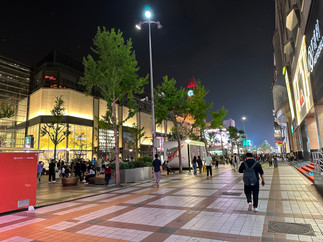






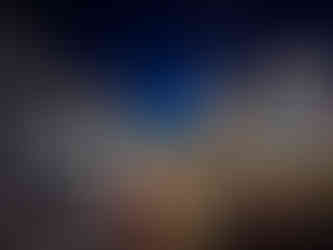













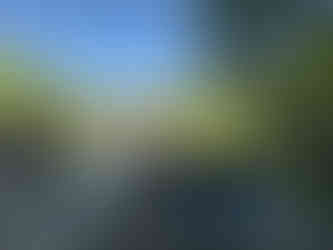









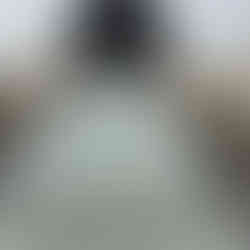

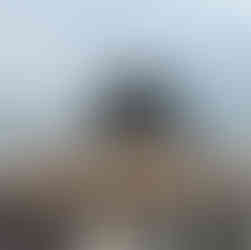


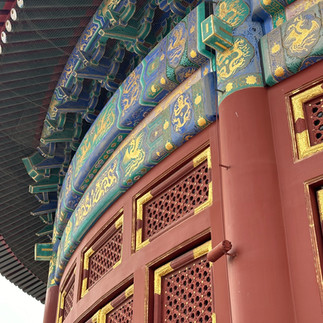


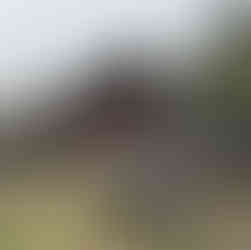






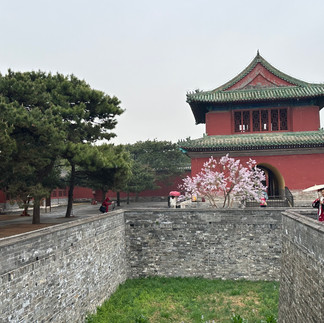












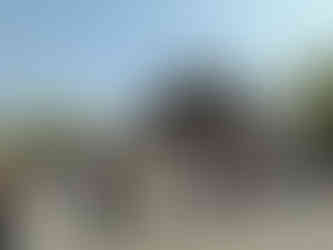




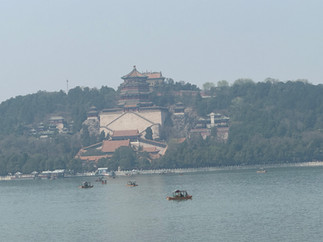




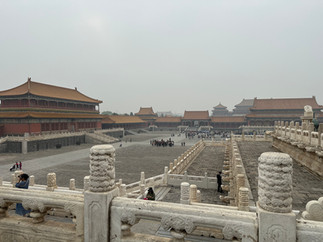













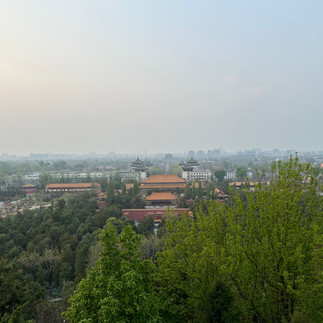

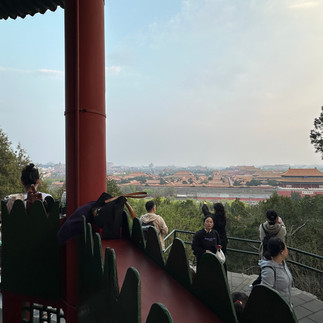







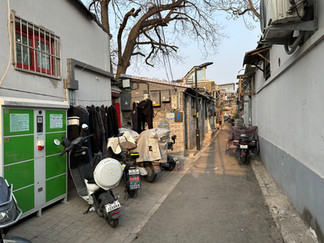



















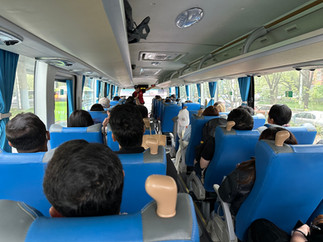































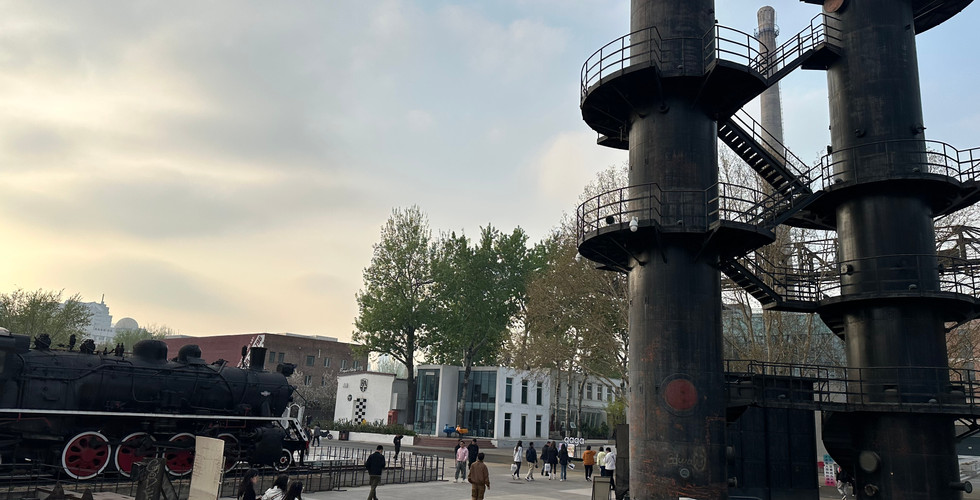




















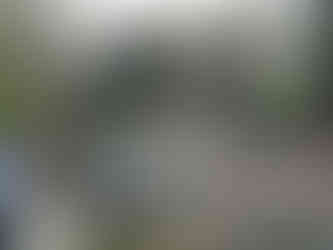


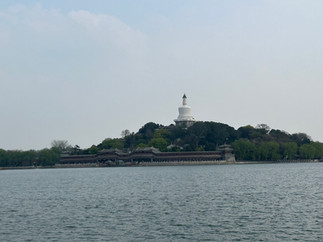













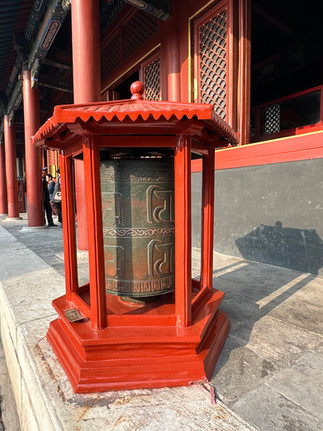













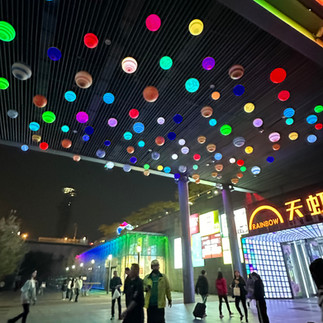















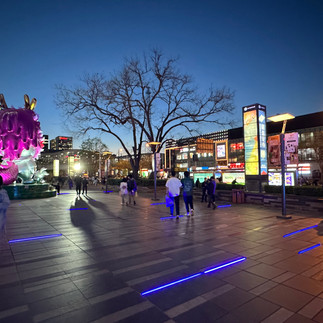











Comments